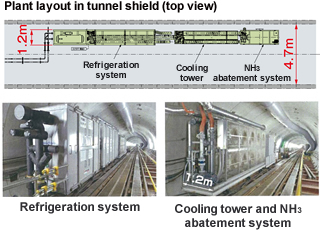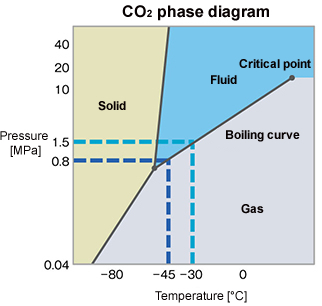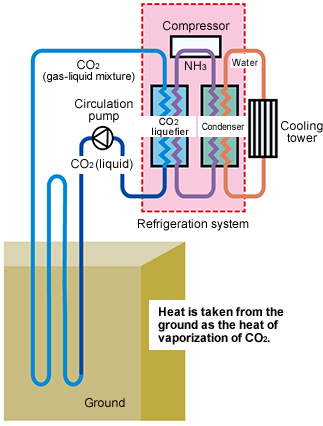Techniques
- TOP
- Techniques
- Ground Freezing
- ICECRETE
ICECRETE
New environmentally friendly ground freezing method
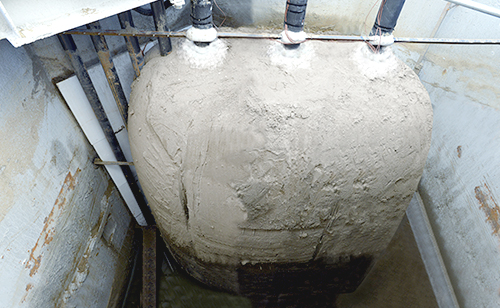
Need for freezing system using natural refrigerants
The Act on Rational Use and Appropriate Management of Fluorocarbons came into effect in April 2015. The Paris Agreement was concluded among the world’s nations in December 2015. Reducing greenhouse effect gas emissions in every industry is an important challenge. To help address ozone layer depletion and global warming, we’ve established a new freezing system based on natural refrigerants: NH3 as the primary and CO2 as the secondary refrigerants. We have used this system in actual ground freezing work.
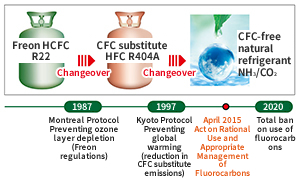
Advantages of ICECRETE using the ammonia (NH3)/liquefied carbon dioxide (CO2) freezing system
- The system uses natural refrigerants to help reduce global warming.
- Liquefied carbon dioxide (CO2) is used as the secondary refrigerant. Its latent heat of vaporization provides cooling temperatures down to -45 °C; the lowest temperature that can be set with conventional brine is -30 °C.
- The required flow of liquefied carbon dioxide is 1/10 of conventional brine, reducing power consumption for the entire system to about 60 % of conventional methods (for instance, due to reduced pump loads; based on results of our experiment).
- Liquefied carbon dioxide also enables smaller pipes, including smaller freezing pipes, enhancing project efficiency.
- Shortens the entire construction period, including piping work.
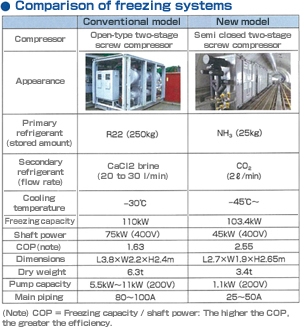
Principle of this method
Carbon dioxide does not normally exist as liquid, changing to dry ice at -80 °C under atmospheric pressure. Pressure in the piping is kept between 0.7 and 1.5 MPa to leave it in the liquid phase at temperatures of -45 °C to -30 °C and to allow the phase to change along the boiling curve. Liquefied carbon dioxide vaporizes with ground heat. Due to vaporization, heat is taken from the ground as the latent heat of vaporization. This reduces the flow rates required to remove as much heat as conventional brine systems.
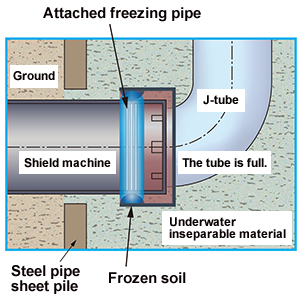
Construction example
We used ICECRETE to protect the shield arrival area in a discharge channel, a tunnel with an internal diameter of 4.7 m, for the newly built Ishikariwan Shinko Power Plant Unit 1 of Hokkaido Electric Power Company. This method made it possible to reduce the dimensions of the entire freezing plant. All units were 1.2 m or less in width, leaving enough space for the battery locomotive necessary for disassembling the shield machine to pass. The system has various advantages over the conventional brine freezing system: It facilitates piping in narrow spaces and creates frozen soil in fewer days. It also reduces greenhouse effect gas emissions by 50 %.
